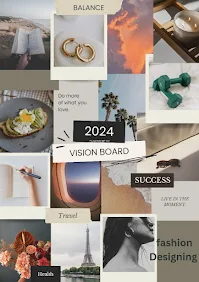How to start fashion designing?
Starting a career in fashion designing is an exciting journey that combines creativity, technical skills, and business acumen. While it might be challenging to encapsulate the entire process in a single response, I'll provide a comprehensive overview of the key steps involved in becoming a fashion designer.
1. *Understand the Fashion Industry* Before diving into fashion design, it's crucial to understand the industry. This includes knowing the different sectors such as haute couture, ready-to-wear, and mass market. Familiarize yourself with major fashion capitals like Paris, Milan, New York, and London, and the designers who have made significant impacts.
2. *Develop Your Skills*
a. *Drawing and Sketching*
Fashion design starts with a concept, often visualized through sketches. Practice drawing and sketching, focusing on human figures and garment details. Learn to convey your ideas clearly on paper.
b. *Sewing and Pattern Making*
Understand the basics of sewing and pattern making. These skills are fundamental for creating prototypes of your designs. Consider taking courses or workshops to gain hands-on experience.
c. *Fabric Knowledge*
Learn about different fabrics and materials. Each fabric behaves differently and can impact the design and functionality of a garment. Understanding fabric properties will help you choose the right material for your designs.
3. *Formal Education* Consider pursuing formal education in fashion design. Many prestigious schools offer degree programs in fashion design, such as: - Parsons School of Design (New York) - Fashion Institute of Technology (FIT) (New York) - Central Saint Martins (London) - Instituto Marangoni (Milan) These programs often cover a range of topics including design, textiles, business, and marketing.
. *Build a Portfolio* A portfolio is a collection of your work showcasing your skills, creativity, and versatility. Include sketches, finished designs, and any other relevant projects. A strong portfolio is essential for applying to fashion schools, internships, and jobs.
5. *Gain Experience* a. *Internships*
Internships provide invaluable industry experience and networking opportunities. They allow you to work alongside established designers and understand the practical aspects of the fashion business.
b. *Entry-Level Jobs* Start with entry-level positions to gain hands-on experience. Roles such as assistant designer, pattern maker, or stylist can provide insights into the daily operations of the fashion industry.
6. *Stay Updated*
Fashion is an ever-evolving industry. Stay updated with the latest trends, technologies, and innovations by following fashion shows, reading fashion magazines, and participating in fashion events.
7. *Networking*
Build a network of contacts within the industry. Attend fashion shows, exhibitions, and networking events. Connect with other designers, fabric suppliers, manufacturers, and potential clients. Networking can open doors to collaborations, partnerships, and job opportunities.
8. *Start Your Own Brand*
If you aspire to start your own fashion label, consider the following steps:
a. *Business Plan*
Create a detailed business plan outlining your brand’s vision, target market, business model, marketing strategy, and financial projections.
b. *Funding*
Secure funding for your brand. This could be through savings, loans, investors, or crowdfunding. Understand the financial aspects of running a business, including budgeting, pricing, and profit margins.
c. *Brand Identity*
Develop a strong brand identity. This includes your brand name, logo, and overall aesthetic. Your brand identity should resonate with your target audience and reflect your design philosophy.
d. *Production*
Decide whether you’ll produce your garments in-house or outsource production. Establish relationships with reliable manufacturers and suppliers. Ensure quality control throughout the production process.
e. *Marketing and Sales*
Create a marketing strategy to promote your brand. Utilize social media, fashion blogs, influencers, and fashion shows to increase visibility. Set up an online store and consider partnering with retailers to sell your products.
9. *Legal Aspects*
Understand the legal aspects of starting a fashion business. This includes registering your business, trademarking your brand, and understanding contracts and intellectual property rights.
10. *Continuous Learning*
Fashion design is a lifelong learning process. Keep honing your skills, experimenting with new techniques, and seeking feedback. Stay passionate and persistent, as success in fashion often requires time and dedication.

.png)




कोई टिप्पणी नहीं:
एक टिप्पणी भेजें